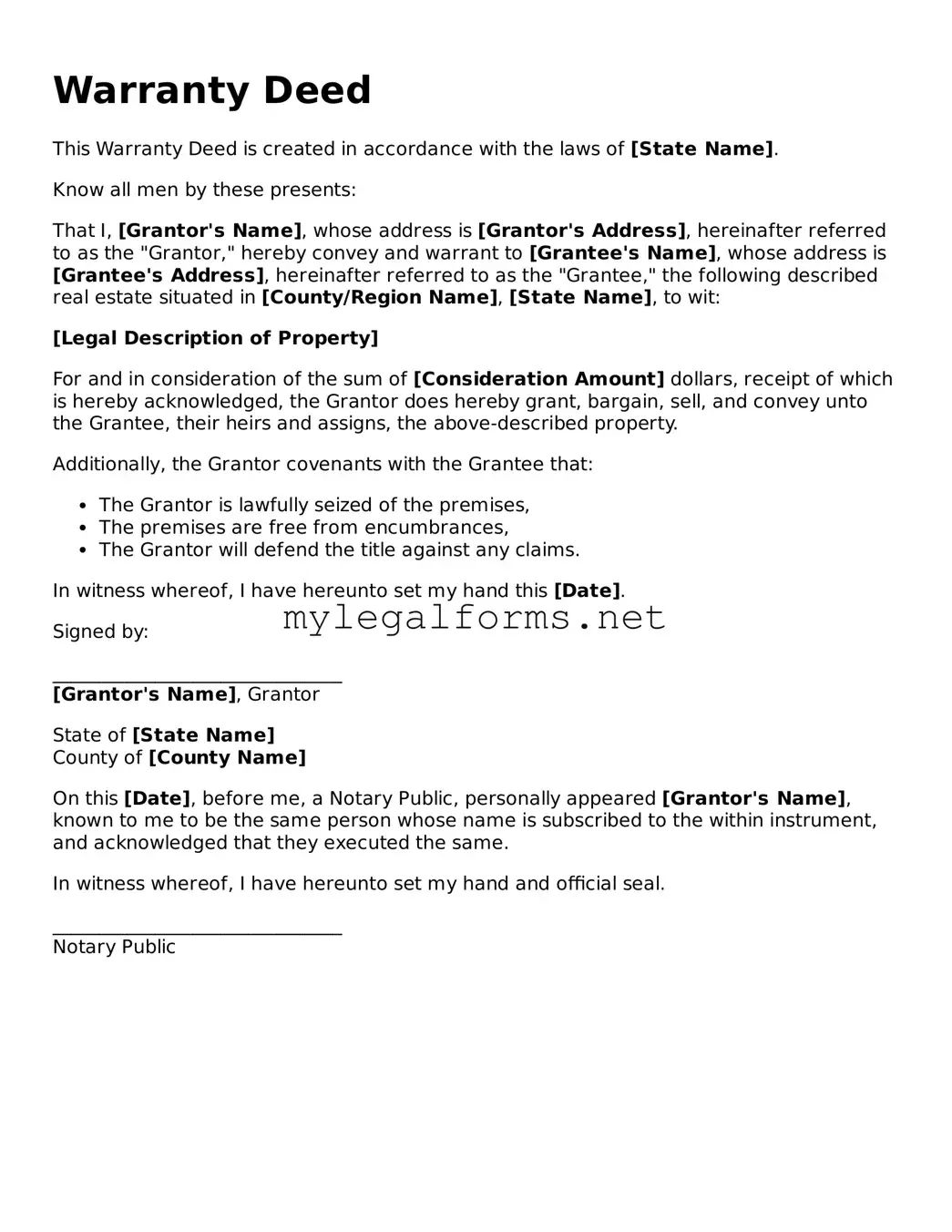Warranty Deed
This Warranty Deed is created in accordance with the laws of [State Name].
Know all men by these presents:
That I, [Grantor's Name], whose address is [Grantor's Address], hereinafter referred to as the "Grantor," hereby convey and warrant to [Grantee's Name], whose address is [Grantee's Address], hereinafter referred to as the "Grantee," the following described real estate situated in [County/Region Name], [State Name], to wit:
[Legal Description of Property]
For and in consideration of the sum of [Consideration Amount] dollars, receipt of which is hereby acknowledged, the Grantor does hereby grant, bargain, sell, and convey unto the Grantee, their heirs and assigns, the above-described property.
Additionally, the Grantor covenants with the Grantee that:
- The Grantor is lawfully seized of the premises,
- The premises are free from encumbrances,
- The Grantor will defend the title against any claims.
In witness whereof, I have hereunto set my hand this [Date].
Signed by:
_______________________________
[Grantor's Name], Grantor
State of [State Name]
County of [County Name]
On this [Date], before me, a Notary Public, personally appeared [Grantor's Name], known to me to be the same person whose name is subscribed to the within instrument, and acknowledged that they executed the same.
In witness whereof, I have hereunto set my hand and official seal.
_______________________________
Notary Public
